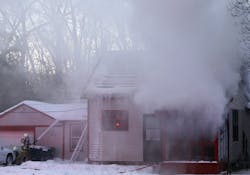LeDuc: Where Do You Stand on Effective Response & Critical Tasking?
Many communities are evaluating their costs and subsequently looking at fire and emergency services budgets critically as public safety, in many cases, accounts for upwards of 60% to 70% of the overall jurisdiction's budget. As such, it is important that your community has assessed the different levels of risk that exist from low, moderate to even high risk or significant/unique. And then formally determine what type of tasks would be necessary to be accomplished should an "event" happen at one of those risk level locations.
Tasks that must be performed at a fire can be broken down into two key components: life safety and fire flow. Life safety tasks are based on the number of building occupants and their location, status and ability to take self-preservation action. Life safety related tasks involve the search, rescue and evacuation of victims. The fire flow component involves delivering sufficient water to extinguish the fire and create an environment within the building that allows entry by firefighters. Often times, enhanced staffing levels may be met with skeptical questioning as to if they are really needed. Critical task analysis provides a very efficient overview of exactly why staffing is important and what can be expected if it is inadequate, meaning tactics and strategy may have to change as well as expected results or outcomes.
The number and types of tasks needing simultaneous action will dictate the minimum number of firefighters required to combat different types of fires. In the absence of adequate personnel to perform concurrent actions, the command officer must prioritize the tasks and complete some in chronological order rather than concurrently. These tasks include:
- Command
- Scene safety
- Search and rescue
- Fire attack
- Water supply
- Pump operation
- Ventilation
- Backup/rapid intervention
The ability to establish and effectively complete these tasks rapidly and efficiently is directly correlated to successfully outcomes with rescuing trapped victims, limiting property loss and spread of fire.
Initial Assignment
Task....................Number of Personnel
Command.................1
Pump Operator..........1
Attack Line...............4
Search and Rescue...3
Ventilation................3
RIT...........................3
Other (hydrant)..........1
Total........................16
Do your community and elected officials understand the varying levels of risk that you are expected to protect? Also, they must understand what outcomes they can expect with the level of staffing protection that the community provides to the department, either directly or through cooperative service agreements. It is imperative that communities understand that all fire departments are not created equal, but are a function of risk levels and staffing levels and timely arrival. Fire growth and flashover occur rapidly and as such require the rapid assembly of your effective response force, or the number of equipped and trained personnel necessary to successfully mitigate the emergency. Having an adequate force assembled quickly, relative to the risk, is imperative for optimal results.
If your department has not undertaken a risk assessment and subsequent critical tasking discussion, I challenge you to do so!
